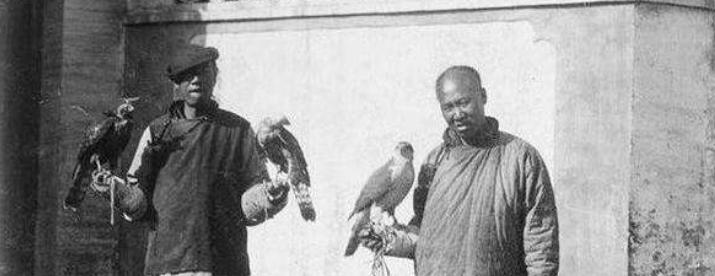In the late Qing Dynasty, the "Eight Banners" generally refers to the relatives of the emperor and the state, that is, the descendants of the Eight Banners, also known as the Banner People. In fact, the Eight Banners were not all relatives of the emperor at the beginning, they were just a hunting organization of the Manchurians at that time, and most of them were soldiers.
When it comes to the children of the Eight Banners, we have to mention the Eight Flags system, which is the basis of the military organization form of social life and the hukou system of the Flag People of the Qing Dynasty. The eight flags system was originally compiled by Nurhaci, with the flag as the number, mainly divided into eight flags: white, red, yellow, blue, white, red, yellow, and blue. Due to the different races of the constituent members of each flag, it is subdivided into the Eight Banners of Manchuria, the Eight Banners of Mongolia and the Eight Banners of the Han Army, but they all belong to the same banner, and even the flag color is the same. After the establishment of the Eight Flags System, Manchuria began to formally implement the Eight Flags System. Due to the relatively harsh environment outside the Guanxi, to a large extent, they have tempered their physique and reached the point where all the people are soldiers in wartime, and such an army has very strong combat effectiveness.

Among the eight banners, each flag has a flag master and three capitals, three of which are Manchurian, Han and Mongolian. There were only five counselors under the Manchu and Han military capitals, and only two under the Mongol capital. All flag people are under the jurisdiction of each flag and are under the jurisdiction and rule of each flag owner. In addition, the eight flags are divided into eight flags on the outside and eight flags on the inside. Among them, the outer eight banners are divided into eight banners of Manchuria, eight banners of Han army, and eight banners of Mongolia; as for the inner eight banners, they are divided into three banners of the internal affairs government and five banners of the prince's palace.
At the beginning, the eight flags were not divided into upper and lower flags, and the status of each flag was almost the same. However, when the Manchus entered Guannei from outside Guanxi to establish the Qing Dynasty, they began to have a distinction between upper and lower banners. Among them, Zhenghuang, Huang and Zhengbai are the upper three banners, and the flag owners are concurrently served by the emperor at that time; the other 5 banners are the lower five banners, which are commanded by the emperor's sons and nephews.
In the process of unifying the Jurchen tribes, the Eight Banners had gained a lot of benefits by relying on their strong combat strength. Especially when competing with the ming rulers for the world, in order to mobilize their enthusiasm, a very generous reward system was introduced. For example, Nurhaci imitated the official system of the Ming Dynasty at that time, rewarding those who had meritorious service in battle and awarding different official titles according to the size of their contributions. The vast majority of the Eight Banners disciples who survived the war were rewarded with a large number of people and animal wealth, and some of the more outstanding Eight Banners disciples relied on military merit to make their children and grandchildren inherit their posts forever, and among these people, the Eight Banners of Manchuria were the main ones. Therefore, before the Qing army entered the pass, a large number of Eight Banners disciples had actually formed an aristocratic class.
After the establishment of the Qing Dynasty, in order to strengthen the military defenses in various places, those Eight Banner Soldiers were stationed in the Beijing Division and various places. Large-scale land enclosure activities were adopted, and a large number of fertile lands of those who occupied the people were assigned to the flag people, and the taxes and labor of the flag people were exempted. As a result, the FlagMan lived a luxurious life from generation to generation, and began to become more and more decadent, and even his descendants were wasted for riding and shooting skills. Because the owner of the Eight Banners is either the emperor or the prince, the people who occupy an important position in the Eight Banners are the relatives of the emperor and the state, so the children of the Eight Banners are basically people who run amok everywhere.